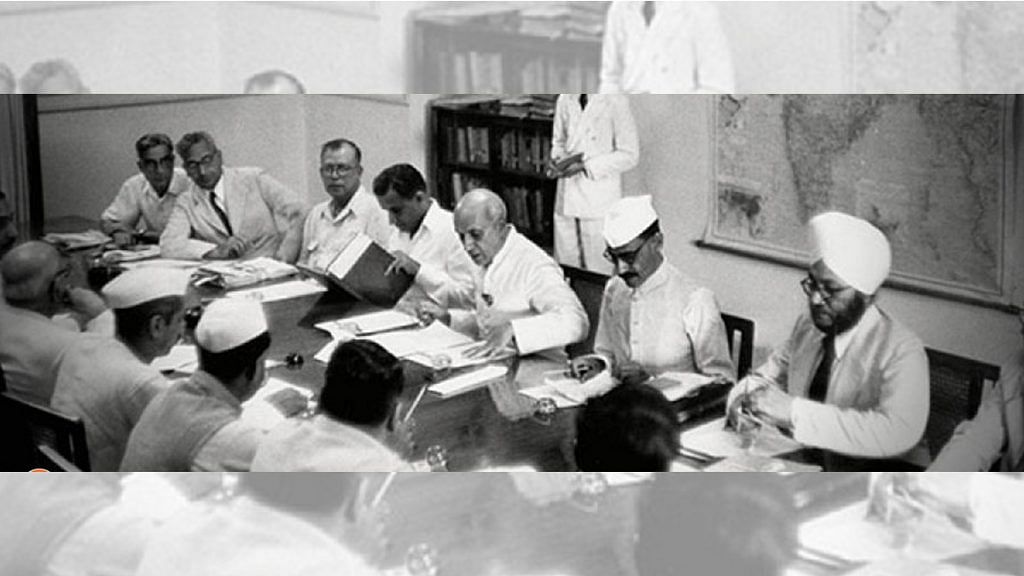New Delhi: Sixty-nine years ago, on 9 July 1951, India’s first Prime Minister Jawaharlal Nehru presented the First Five-Year Plan to the Parliament.
Five-Year Plans were a formal model of planning adopted by the Indian government after Independence, for an effective and balanced utilisation of resources.
They were formulated by the Planning Commission of India, which was established on 15 March 1950. Since it was not a constitutional body, the Commission reported directly to the Prime Minister and its first Chairman was Nehru himself.
This day in 1951, Jawaharlal Nehru presented the First Five-Year Plan to the Parliament. Effective implementation of the Plan led to India registering 3.6% GDP growth per year, in the early yrs of independence, outperforming even the Plan’s target of 2.1% of GDP growth per year. pic.twitter.com/S1KG8k3rqa
— Congress (@INCIndia) July 9, 2020
The Commission was tasked with the responsibility of raising the standard of living in the country through proper allocation of resources, increasing production and enabling employment opportunities for everybody.
The Five-Year Plans were centralised and integrated national economic programs. The first such plan was implemented in the Soviet Union in 1928 by Joseph Stalin. Since then, countries such as China, Bhutan, Vietnam, South Korea, Argentina, Romania and Ethiopia have also implemented Five-Year Plans.
According to Rajeev Gowda, Chairman of the Research Department of the Congress party, it was freedom fighter Subhash Chandra Bose who first set up a National Planning Committee in 1938 and the primary responsibility of this Commission was to utilise the then-limited resources in the country to best possible use.
“After independence, the state had an active role in channelling resources as it could not be done by markets alone,” explained Gowda.
Also read: Xi has thrown the gauntlet at Modi. He can pick it up like Nehru, or try something new
First Five-Year Plan in India
With the Partition as backdrop, the country reeling with the influx of refugees, severe food shortage and mounting inflation, the First Five-Year Plan was introduced in 1951. It focused primarily on the development of the primary sector, specifically agriculture and irrigation.
Drafted by economist K.N. Raj, the plan was based on the Harrod–Domar model, which suggested that growth was dependent on two things. First, high level of savings since higher savings enabled greater investment and second, a low capital-output ratio that ensured efficient investment and a higher growth rate.
The plan had a target of 2.1 per cent GDP growth for the fiscal year, however, it ended up recording a growth rate of 3.6 per cent that year.
Gowda explained that the Five-Year Plans were focused on making India self-sufficient, enabled industrial growth and ensured that development went beyond the urban areas and reached the interior parts of the country.
Also read: P.C. Mahalanobis: The father of Indian statistics who introduced concept of planned economy
12 Five-Year Plans in India
If the First Five-Year Plan focused on agriculture and energy, the Second Five-Year Plan focused on the development of the public sector and rapid industrialisation. Drafted by statistician P.C. Mahalanobis, the Second Plan was also called the Mahalanobis Plan.
Under the plan, hydroelectric power projects and steel plants were set up at Bhilai, Rourkela and Durgapur. Coal production was increased and more railways lines were added in the Northeastern part of the country.
The Third Five-Year Plan focused on making the economy independent and self-reliant. However, it was interrupted by the war with Pakistan in 1965, which was followed by a severe drought the same year. The Third Five-Year Plan had a targeted growth rate of 5.6 per cent, but the actual growth rate was 2.4 per cent that fiscal.
After this, there were three annual plans between 1966 and 1969. This period was also called ‘plan holiday’. The Fourth Five-Year Plan was introduced only in 1969.
In 1990, 21 years later, there was a gap between the plans once again due to the constantly changing government at the Centre. Annual plans were launched for the years 1990-91 and 1991-92, and the Eighth Five-Year Plan was kicked off in 1992.
India had a total of 12 Five-Year Plans, the last one being from 2012-2017.
In 2015, Prime Minister Narendra Modi dissolved the Planning Commission and replaced it with the Niti Aayog. The Five-Year Plans were also discontinued.
Also read: 60 years ago, a Right liberal Swatantra Party had challenged Nehru’s socialist Raj
